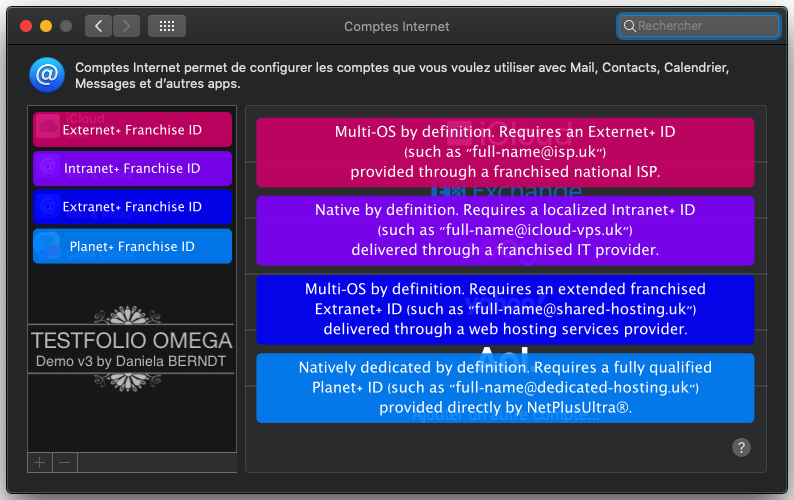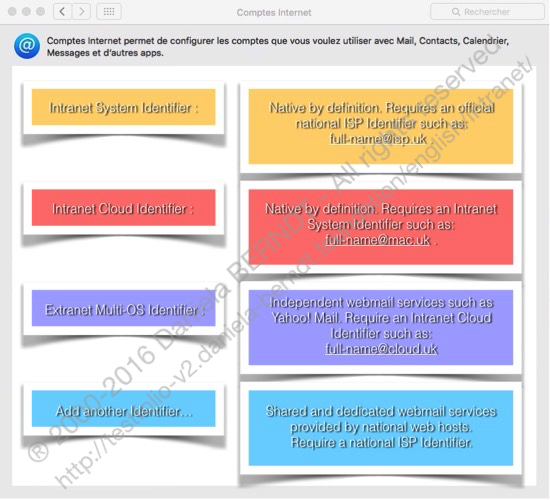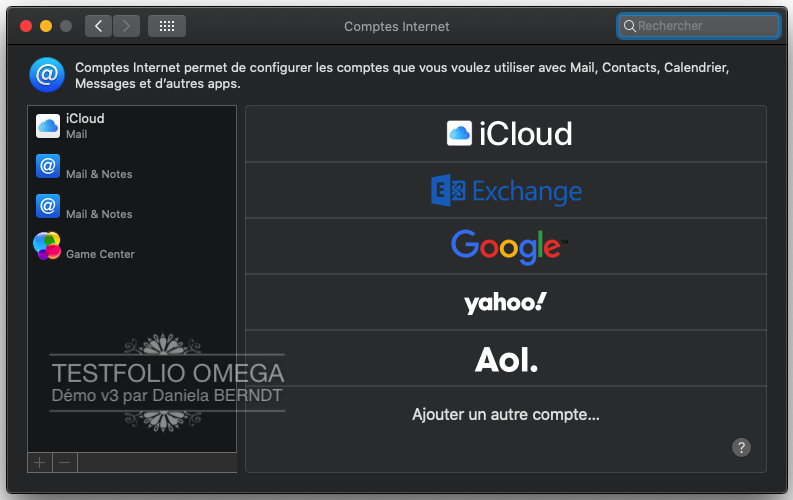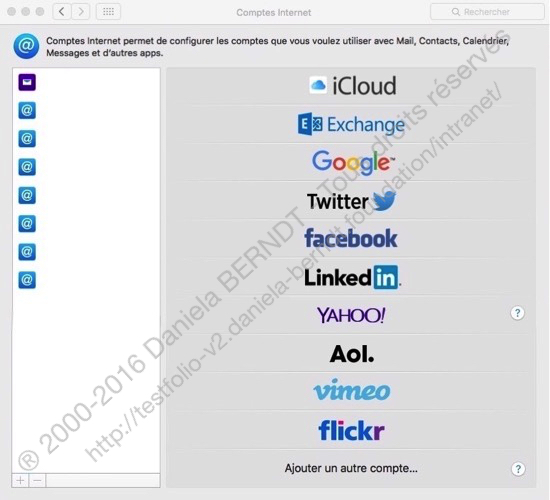Staying Focused
- ASSETS (AFTER)
- LIABILITIES (BEFORE)
Internet Accounts options of the Mac OS X System Preferences after conceptualization,
i.e. after correction of the "system default" inherent in the prevailing market logic of interconnecting leaking buckets, as entered on the liabilities side of the present balance sheet. The four remaining types of identifiers presented below are webmail accounts corresponding to the successive horizontal throughcuts of step 2 (Externet+), 3 (Intranet+) and 4 (Extranet+), as presented in the main dashboard chart (↳) of the present Testfolio Omega website (please click on a thumbnail to enlarge the view).-

v3.0/2020+ (macOS Catalina)
-

v1.0/2016+ (Mac OS X El Capitan)
Screen capture of the "Internet Accounts" options of the "System Preferences" of "Mac OS X El Capitan":
In the El Capitan version of Mac OS X, no distinction is made - at the user interface level - between webmail accounts (such as iCloud, Exchange, Google, Yahoo, AOL), and web-based content hosting services (such as Twitter, Facebook, LinkedIn, Vimeo, Flickr). Considering therefore that any type of email address (outside of an alias) can be used to create a social network account, the impact on the users' visibility - in terms of transparency - only thickens the plot (please click on a thumbnail to enlarge the view).-

v3.0/2020+ (macOS Catalina)
-

v1.0/2016+ (Mac OS X El Capitan)
Upon purchase of a computer device, two "native identifiers" would be created using (one of) the official (i.e. authorized) national ISP identifier(s).
The first identifier, your "System ID", would enable you to optimize your technical user experience through the provider’s support desk, with regard to all issues related to the operating system, including the native and third-party apps available for the latter.
The second identifier, your "Cloud ID", would enable you to optimize the qualitative user experience to be shared with all other users of the same natively dedicated "Intranet+", depending on your project-specific return on experience, i.e. on the showcase pertaining to the web contents you are producing with your native equipment.
In this scenario, the Cloud is no longer a duffel bag for everything you keep hoarding "just in case", but rather a "shield" enabling you to safely share your many content-related news feeds.
The generic (ex-works) version of this "Starter Forum" would help you to safely quick-start your personal and/or professional publication projects, in intelligent collaboration with your many (groups of) contacts, i.e. to test-drive your project ideas for feasibility.
The "(NetPlusUltra®) Enterprise+" version thereof would be a conceptual "R&D Showcase" entirely dedicated to the user's business activity, proudly powered by macOS, or Windows, or Android. As the conceptual web shop of the legitimate managing web author thereof, each Cloud would be configured so as to evolve at the pace of a blossoming digital economy.
By virtue of their multi-OS nature, the "Extranet+" accounts would be reserved for all projects which bring together users from different (but no less native) operating system environments.



